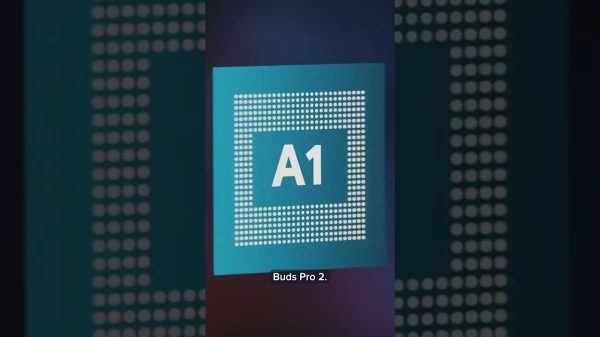Prior to January 2022, a federal prison term for many first time offenders meant serving the majority of the imposed sentence, approximately 85%, with the sole break coming from Good Conduct Time of 54 days for each year of the term of imprisonment. Then, in January 2022 the First Step Act allowed many minimum and low security inmates to earn up to a year off of their sentences and an unlimited amount of home confinement. It was a game changer for many, both those already in, and those going to prison. Recently, the U.S. Sentencing Commission passed an amendment to the U.S. Sentencing Guidelines that has the potential for reducing the prison terms for thousands of inmates.
The U.S. Sentencing Commission (USSC) is an independent agency within the judicial branch created by Congress in 1984 to reduce sentencing disparities and promote transparency and proportionality in sentencing. There are seven seats on the USSC but only this year have they had quorum to pass amendments, or really do their job. For five years the USSC has hobbled along without a quorum, but now with a full contingent of members they took a step to right some of the wrongs with the U.S. Sentencing Guidelines.
The USSC collects, analyzes, and distributes a broad array of information on federal sentencing practices and this time their research focused on the inequities in accounting for criminal history, or the lack of one. When imposing a sentence, federal judges lean heavily on the range of sentences available to them under the U.S. Sentencing Guidelines’ Sentencing Table. A number of factors such as the seriousness of the crime, the number of victims, the quantity of drugs or amount of dollars associated with the crime, yield levels which are added together to get to a “Total Offense Level.” That total is compared to a grid setting forth advisory ranges (in terms of months) for a prison term that a judge must consider—but need not follow—when imposing a sentencing. Another factor in determining the sentence is the criminal history of the person. The more numerous and/or serious a defendant’s criminal history is, the higher his Criminal History Category which ranges from a low of I to a high of VI. The USSC’s recent amendments address sentencing disparities in criminal history, including, most pertinently, those with no criminal history points.
In order to understand the amendments the USSC put forward, I reached out to Mark Allenbaugh, a former US Sentencing Commission attorney and now head of Sentencing Stats, “There were ten amendments that the USSC put forward which will go into effect in November 2023,” Allenbaugh said, “but there are really three that got peoples’ attention; expanded compassionate release criteria, the Zero Point Offender reduction and the Status Points amendment.” Allenbaugh said that while the news is promising, it does not mean an across the board sentence reduction for many in prison. The amendments go into effect on November 1 2023. Two of the amendments—the Zero Point Offender and Status Points— are retroactive to any qualifying person currently in prison but cannot be given effect until February 1, 2024.
Here I wanted to focus on the Zero Point Offender since that is where there have been a number of questions, particularly for those with economic crime offenses which are pervasive right now (PPO Loans, healthcare fraud and financial fraud). In looking at the Federal Sentencing Guideline Table, you will note that there is an x-axis with the offense points and a y-axis that has the criminal categories (I-VI). If a person had zero criminal history points—prior convictions do not automatically disqualify a defendant—and did not commit a disqualifying offense (sex offense, gun charges, hate crimes and terrorism), then they could qualify for a 2-level reduction off of the offense level. In some cases it can mean many months or years off of the sentence. Allenbaugh created an assessment tool to see whether or not a person will qualify for the reduction (click here for website).
Just because someone qualifies for the adjustment, however, does not mean they will get it automatically as the prisoner will have to file a motion for the sentence reduction and convince the judge they are worthy of it, and prosecutors will likely oppose. For those who were sentenced below the guidelines as a result of a judge’ who felt the guidelines were too strict, further reduction may not be available if the original sentence already is below the adjusted range. . Allenbaugh said, “If a sentence was a generous one for the defendant and already below the adjusted range, it is unlikely a further reduction will be given but it could be worth asking for since it is an opportunity to get back in front of the judge and there are few opportunities to do that.” The USSC estimated that there are 7,272 inmates who will qualify and at least 1,198 would be subject to immediate release when the amendment goes into effect.
Allenbaugh stated that the tool his company developed is just the beginning of the process and you will need an attorney to help guide you through the filing but tools like this can provide an assessment of the likelihood of success. “I believe a lot of people are going to think they will be eligible or will just hope they’re eligible,” Allenbaugh said, “but people can get a feel for whether they have a good chance before they decide to spend the time and money to file.” One concern is that these types of amendments often spark fraud from those who prey on the hopes of those seeking an early release. Do your homework and know that there are no easy outs when it comes to prison.
Those with longer sentences who were sentenced within the guidelines will likely receive the most benefit as far as time off of a sentence. For instance, if a defendant had a Total Offense Level of 25 at sentencing (Guideline range of 57-71 months), and qualified for the Zero Point reduction, that would reduce their Total Offense Level to 23 (Guideline Range of 46-57 months). If the defendant received a 71 month sentence, the top of the original range, it would be a good bet that the judge would re-sentence the defendant to 57 months, the high end of the lower guideline. That is a 14-month reduction. However, the judge could resentence to as low as 46 months, which would equate to a 25-month reduction. For a defendant who has a lower Total Offense Leve, say 13, it could mean a move into Zone B making home confinement a distinct possibility. “If I were someone who got a low sentence and whose Offense Level Points are 13 or less, I would try to get in front of the judge prior to surrender,” Allenbaugh continued, “and that might mean delaying surrender so you can take advantage of this amendment.”
For more information, I also suggest those who are seeking more information to listen to a Podcast that Allenbaugh did with attorney Doug Passon who specializes in sentencing strategies.
Read the full article here













